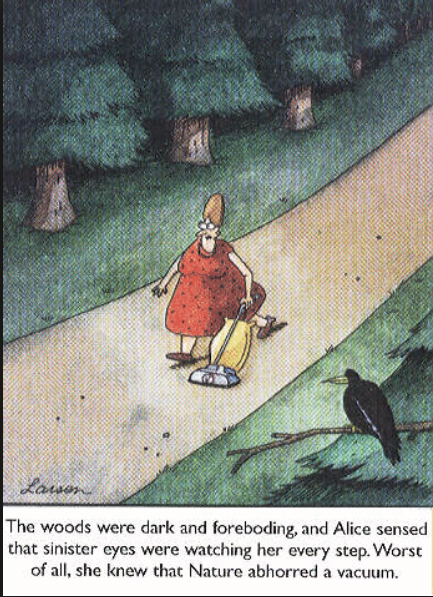What is The Sound of Silence?
What comes to mind?
.
.
.
.
.
Is it a passive-aggressive response to a pithy title like that? A response but not a response? One where you decide not to say anything just to see who responds first?
Or better yet, is it the reimagined song Sound of Silence by Disturbed, or the original version by Simon and Garfunkel? If you listen to either version of those make sure you actually listen to the words that are being said such as “..people talking without speaking, people hearing without listening….”.
We are a race that makes a bunch of noise, sound and fury, but with little effect. We are too lost in our own worlds, distracted by the things we invent to make it easier for us to communicate.

What if we were to use silence? The effort to use silence to help generate tension that may create more open communication between parties. However, in some cases, silence may not work and old-fashioned talking combined with nonverbal communication, the physical gestures, body positioning, human actions while people are communicating with one another is also a way to communicate.
Silence
That awful awkward silence. Silence is a vacuum, and what does nature abhor? A vacuum. So what does it do, it forces that vacuum to be filled. When you are in a period of silent tension, one of you leaks and fills that void with noise. Words, groans, sighs — something. Once, a customer told me “you have one mouth and two ears, which do you think you should do more of?” He was suggesting that I should shut my mouth and listen.
It works wonders.

Have you ever been around a professional negotiator (or even a great instructor) that can use silence to her advantage? They will ask a question to you or of a room full of people and wait. And wait, and wait, and wait.
Eventually, someone can no longer take it and starts blabbering away like they are being waterboarded. You need to be comfortable to wait for an answer. Learn how to live with that silence.
When you ask a question, stop. Wait.
Wait some more.
Let the other party understand, digest, and formulate a response. Do not fill the silence with a following question, or with an explanation.
Just.
Wait.
If you learn to use silence properly, it can help coach others that you work with. Instead of you telling them the answer, they can ask questions to find the results. It forces them to be more engaged when that silence envelopes them. They will answer their own questions.
You can also use the silence to learn from somebody. Asking them what do they want, or what do they need, and let them do the talking. Let them fill that void. Yet, you still need to be engaged and listen to what is being said, as well well as what is not being said. The words in the quiet space between the words. Learn how to be an effective listener.
To learn how to become better at using silence as a tool to get others to open up and fill that quiet tension, count in your head. Say the alphabet in your brain. That internal dialog will keep you from falling into your own void until you get in the practice of using silence as a way to generate tension. But remember to stop counting when the other person begins to speak, you need to pay attention!
Body Position and Nonverbal Communication
Not surprisingly we are becoming less connected with non-verbal cues. Body language. Is this because of asynchronous electronic “instant” forms of communication like email, IM, text, iMessenger, Skype, Zoom, Snapchat, etc., etc.? It is asynchronous because it is not interpersonal, face-to-face. You can choose to ignore a message, and it is not required to have an immediate response.
…oh, sorry dude, I just saw this… (translation — I actually saw it three hours ago but I was distracted by something more important than your message)
Body language is important when you are speaking with someone, in person, synchronously. Real-time. The physical gestures, facial expressions, and body positioning all speak volumes to the “listener” and if they are paying attention, then they need to realize when it is necessary to change the message being sent.
Non-verbal communication is often through instinct and habit, rather than through conscious deliberation. You probably do not know why you struck a certain pose. It is not to say that someone uses deliberate body positioning to effect a change in your communication with another, but those that are in tune can use it to their advantage to help build relationships and successfully negotiate when required.
We must recognize that our body language transmits your level of attention, your involvement in the conversation. Much like the “lean in” statement and book of the same. What does that simple action phrase mean to you?

When using or receiving non-verbal communication, you need to learn the strength (value?) of each sort of languages.
- Gestures and body movement — for instance when speaking in front of a group of people, simply holding your hands up can be perceived as “stay away” or “do not come any closer” and your audience will react accordingly Yet, a more engaging speaker may use a “come here” arm wave, or “come closer” finger waggle to engage a more intimate conversation. Learn to use fast movements to initiate urgency, but not frantic movements of a person in panic. Use slow movements to engender patience and calm.
- Eye contact and facial expressions — wow. This is missed almost always. How often do we have people failing to look at us directly, averting their eyes, or furtively glancing around the room for the escape through door #2? But even eye contact can be modified through the use of your brow. If you have a furrowed brow or it is pinched in anger or pain, it gives a much different perception than brows raised, eyes wide in excitement!
- Facial expressions part 2 — um…remember to smile.
- Touch — not everyone likes to be touched. Some people hate to touch others, but it is what brings relationships closer. Handshakes are key and men you need to learn how to do it right. It is not a power struggle. Women especially need to learn, no cold fish baton passing please. Learn how to shake hands. But even a touch on the shoulder or arm can engender a stronger emotion than just words alone.
- Space and position — get away! If you read your audience, you would quickly realize they do not want the bro-hug or the chest bump. Arm's length is good. Some people are space hogs and are all up in your stuff. It is OK to take a step back and you can use hand gestures to ward them off like a kung-fu master. Yet, sometimes you can use space to your advantage — for instance if I am engaging with someone I need something from and we are outside, I make an effort to position them so they are not looking into the sun or any distracting activities around us, but looking at me, forcing them to look at me when I say “hey, look what I can do.”

So when you are in a conversation with someone or involved in your next meeting, watch around the room and see who is engaged, or disengaged. Look for the ones blocking or pushing against whatever is being said, and for those that are drinking every last drop of the kool-aid.
Additionally, try and practice using silence to your advantage. Try to use silence to learn more about someone. While you are doing that, you can also look for the non-verbal cues to help fill in the gaps.
Ask a question.
Shut up.
Pay attention.
Be engaged.
Lean in.
Go forth and be brilliant.
Comments
Post a Comment